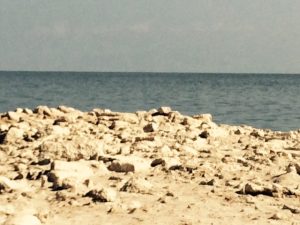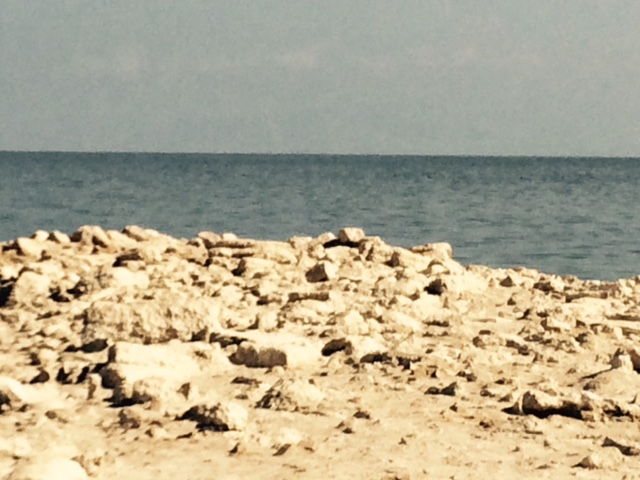
A photo of the Salton Sea taken from Poe Road this month.
Of late, it might appear this blog has become a tale of the Salton Sea, but that should be viewed in a positive light as it suggests the pace at which there are new developments to discuss. Most recently, President Obama was in Lake Tahoe for an environmental summit during which he spoke of the need to reverse the deterioration of the Salton Sea and help “a lot of folks all across the West.” It may only be a single statement, and it may be more symbolic than the kind of call for action most of us would like to see, but nevertheless to have the President speak of the Sea is an important step. The hope is that the Sea has become a Federal priority, and while the truth of that will have to be proven over time, there definitely is new momentum worth praising.
The President’s statement came as the State and Federal governments signed a Memorandum of Understanding in which both governing entities declare their intention to work in tandem on Salton Sea management, while acknowledging the State—through a series of Legislative actions—has responsibility to carry out a restoration program. Certainly, stakeholders would like to see more actionable items than are identified in the MOU, but there are signs of greater Federal investment. The Feds promise $30 million to aid with the development of projects that fall under the State’s Salton Sea Management Program. The Feds also indicate interest in geothermal industry with a possible intent to purchase up to 250 megawatts of geothermal energy, which would lead to new geothermal development along the Sea.
The MOU comes as the State—led by the California Natural Resources Agency—prepares to unveil its long-term management program for the Sea by the year’s end. Natural Resources has already released a series of short-term and mid-term projects, some of which are already funded and will begin construction in 2017. When you consider the funding now available for the sea—nearly $250 million when all the pots of funds are totaled—there is a funding stream to move a management program forward, so there is reason to focus a blog article on the Salton Sea one more time.
But, as has been said before, the steps taken now cannot be the end all. They are merely a beginning, and both the State and Federal governments have a responsibility they must live up to at the Sea. Two critical reasons are to protect human health and maintain habitat for bird life that depends on the Sea. Beyond that, managing the Sea also protects the investments in the Quantification Settlement Agreement, the historic set of agreements signed in 2003 that enable California to live within its 4.4 million acre-feet allotment of the Colorado River. The QSA is sound policy for the region, the State and the Federal government. Most recognize that, but at the same time want the State to meet its Legislative promises—tied to the QSA—to address the Sea. We all want that. It’s time for the Federal government and the State, through the MOU and what we hope are further steps, to have a strong voice in support of the QSA and one way to do that is to take those necessary incremental actions to address the Sea.
Most have tempered their expectations as to what the Sea will be in the future. The term used these days is a smaller but sustainable Sea. That certainly is not too much to ask for. Those agencies who are the funding parties of the QSA Joint Powers Authority, the San Diego County Water Authority, the Imperial Irrigation District and the Coachella Valley Water District, are meeting financial obligations to address mitigation at the Sea. The State and Federal agencies need to do their part to deal with the larger issues of restoration—an issue that pre-dates the QSA—and now we are seeing actions in which both are doing so.
We hope and expect there will be more positive reasons to write about the Sea in the weeks and months to come. Let’s all stay tuned and work together to ensure the governing agencies live up to the path they’ve set through the MOU and the Salton Sea Management Program.
